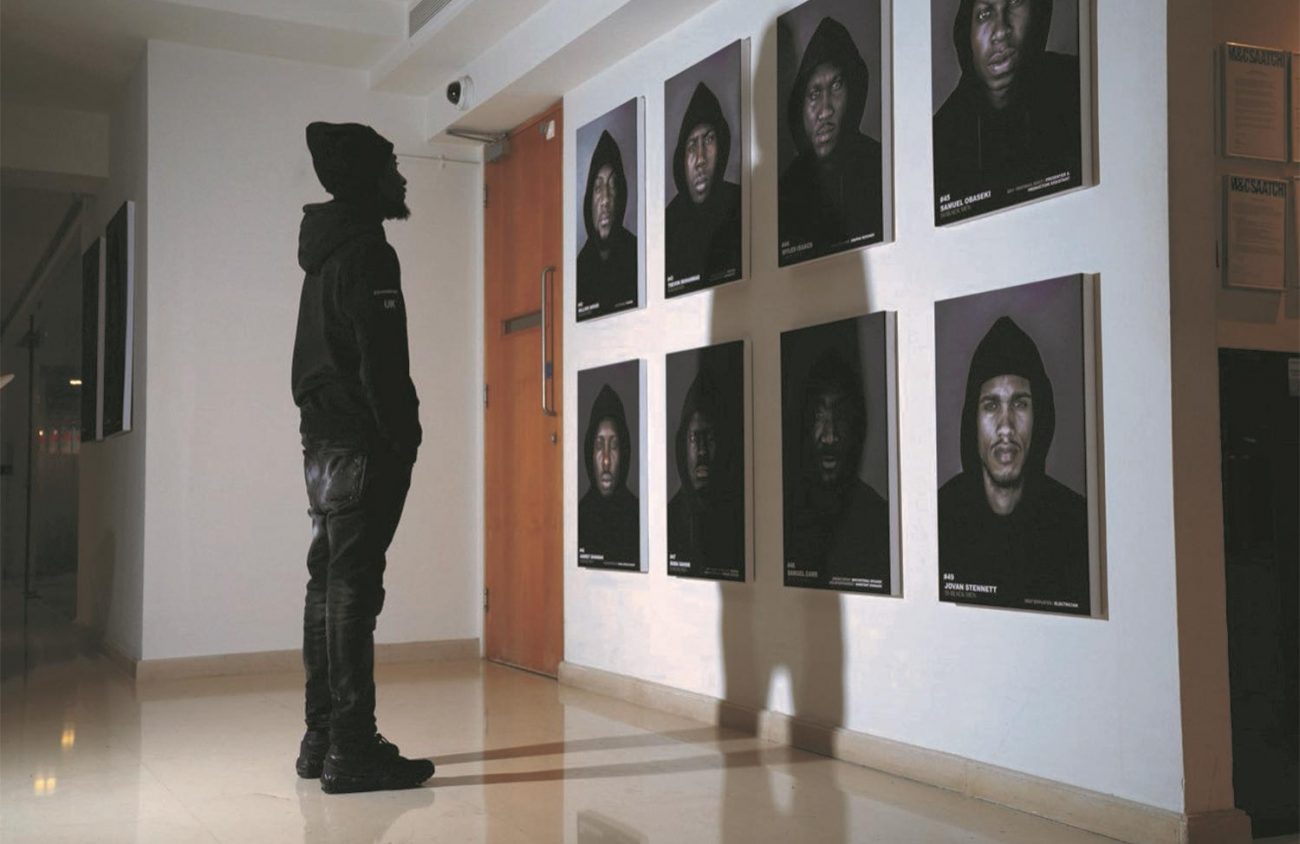On June 27, Cephas Williams went shopping for luggage. He bought some and left the store, but while still at the shopping center in Dartford, England, he was grabbed by security and asked to show proof of purchase. Williams told the man who grabbed his arm that he had the receipt but in turn demanded to know why he was being grabbed. The interaction was recorded.
Near the end of the recording someone off screen suggests the entire incident was a mistake. But Williams disagrees. It’s not a mistake, he says. “It’s racism.”
Was the event an honest mistake or a case of racism? The fact this is a question at all reflects how often Black people are profiled by law enforcement, sometimes with deadly results. The video of the interaction has so far received over 250,000 views on YouTube, which may be due to Williams being a known activist, artist and entrepreneur, especially in the United Kingdom.
His art exhibit 56 Black Men, originally scheduled to run through Oct. 10, has been extended through Nov. 21 at the Jordan Schnitzer Museum of Art on campus at the University of Oregon.
The show, created in the U.K., is making its first appearance in the U.S. at the Schnitzer thanks to Lisa Abia-Smith, who has been director of education at the museum for 20 years, as well as senior instructor of arts administration and education. She contacted Williams and obtained permission to show his photographs. Inspired by his message of challenging misrepresentation, she also created a companion exhibit, I Am More Than Who You See.
The number of photographs in Williams’ show is not random. It is equal to the number of Black people reported murdered in London in 2018. The subject of the exhibit is among humanity’s most consistent problems — negative stereotyping of “the other.” Yet its format is simple: 56 photographs of Black men wearing hoodies. Each image is staged the same way, with the subject wearing a hood over his head and looking straight into the camera. The images are spare, studio shots executed in black and white.
If the portraits were of men of any other color or race, would we see them differently? The exhibit confronts viewers about preconceived notions of criminality formed by ideas of race and clothing as much as it represents 56 men.
If there were no verbiage to go along with the photographs, we would be left on our own to make what we would of the subjects. But the works are labeled with the identity of the men pictured. We are told who they are and what they do. The first photograph is of Ade Ahmadu, co-founder of McJonathan London and Project Manager at Financial Services. The second photograph is of Charles Banigo, product designer at Tuwon and court clerk. The third photograph…
Sometimes art exhibits leave off the labels so our experience won’t be directed. But here the labels are all-important. They contradict negative perceptions that might be felt by a viewer.
The entire show feels like a challenge. How are we going to see these men, as hoodlums or as law abiding citizens?
It’s a question that reminds me of the gestalt image: young lady or old woman? Once you see the figure as old, it’s hard to see her young. In other words, once you see it one way, it’s hard to see it the other. Williams’ show tries to do something remarkable: change the way one group of people perceive another.
Abia-Smith first heard of the exhibit from Douglas Imaralu, a former UO graduate student originally from Nigeria. He thought she would be interested, and he was right. Her companion exhibit features 15 photographs of UO students. The product of a workshop, it was curated and photographed by two paid interns, also students: Malik Lovette (2018) and Kayla Lockwood. Displayed in the JSMA North Hallway, it’s been used as a jumping off point for a third Community Conversation, which are annual events addressing stereotyping.
56 Black Men extends beyond the art. If you’re interested in joining the movement, go to its webpage and sign up to attend an event, volunteer or sponsor the campaign. ν
56 Black Men and I Am More Than Who You See have both been extended through Nov. 21 at the Jordan Schnitzer Museum of Art, on campus at the University of Oregon. Hours are 11 am to 5 pm Wednesday through Sunday. See more about 56 Black Men at 56BlackMen.com.
